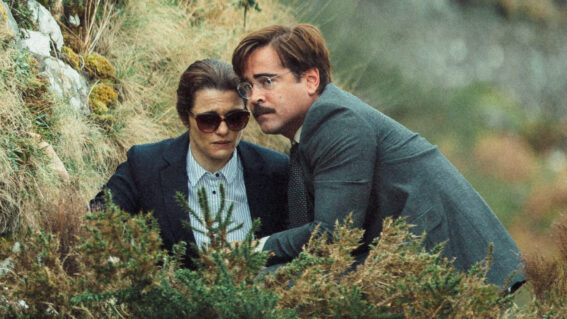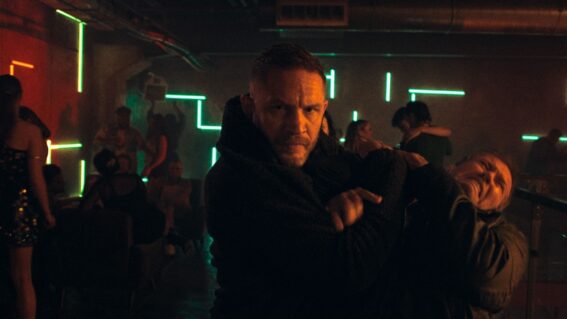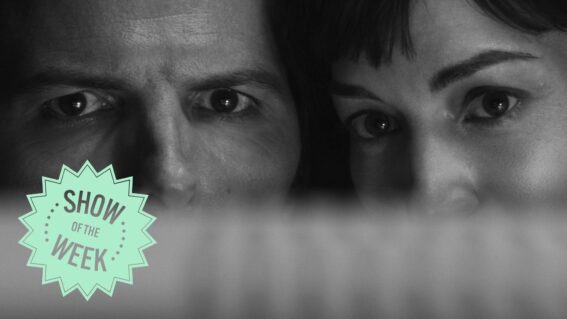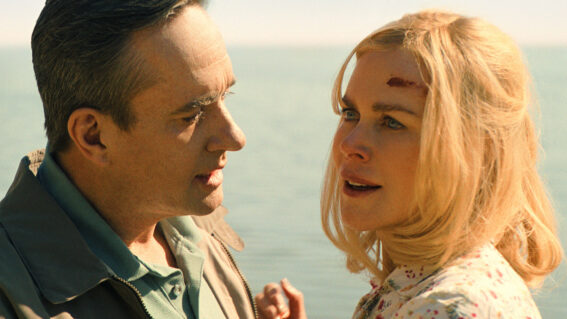Fall-ing in love with the high-concept survival genre

Fall sees a duo stuck up at the top of a ridiculously high communications tower—a predicament that sends Rory Doherty through the effective and enterprising subgenre of high-concept survival films.
Have you ever gotten stuck in a lift between floors, or gone through a nasty bit of turbulence or choppy waves? It can be a scary experience, but rarely are the stakes life or death. One of Hollywood’s most perverse fascinations is to throw its audience into a very specific, always terrifying situation and make us watch in real time as people struggle to survive.
Sounds like a good time at the movies!
Often set in one location, rarely with more than a few characters, the high-concept survival movie is a treasure trove of niche but keenly felt danger. With Fall in cinemas this month, a story about two female climbers stuck at the top of a ridiculously high communications tower, it’s worth identifying this unique genre’s various strands.
A notable origin point for this type of thriller came 25 years ago, when Cube invited us to solve the puzzle of endlessly repeating cube rooms, each with fiendish and grisly traps to finish off unaware or foolish victims. It introduced to audiences the joys of working out alongside the characters how to pool resources, put their thinking caps on, and figure out how to save your life under completely ridiculous circumstances.
These are all characteristics shared by Fall, even though Cube is more well-known for starting another subgenre: the sci-fi prison survival film. Netflix has a fair share of them; The Platform made a splash by introducing social politics to the genre (and like Cube, benefited from reusing one main set), and Circle (not to be confused with either of the other Netflix Originals to be called The Circle) just got 30+ people to stand in a room and called it a day.
Even the Saw franchise shares common ancestry with all these examples. If there’s one thing these reveal, it’s that a very low budget defines the high-concept survival movie; with minimal set and cast, solid filmmaking is necessary to elevate a good premise into thrills.
In the early 2000s, Colin Farrell led a lo-fi danger film that shared a lot of DNA with Speed—Phone Booth has a sniper trained on a banker on a public telephone for the majority of the runtime, and thanks to Farrell’s excellent acting, he sells the tension. In terms of other danger movies set in man-made contraptions, the M. Night Shyamalan-produced Devil made less of an impact with its elevator-set horror—although at least the set design budget would have been cheap. Here, a lift full of people have to work out who is … Satan. Expect a stupid, out-of-left-field twist in this one, although it offers up fun detective work to the impending danger.
It’s worth mentioning not every movie of this type has to be stupid. While they’re usually strict B-movie fodder, there’s been a lot of elevated, prestigious explorations of the exhilarating sensation of being stuck in an impossible situation. Danny Boyle’s 127 Hours told the real story of a mountain climber who was forced to sever his own arm after it got caught behind a boulder, and Boyle’s idiosyncratic style helps you feel every tinge of pain being felt by the boulder’s victim.
Alfonso Cuarón’s immersive Gravity pushed the limits of what 3D cinema could do, giving a dizzy-inducing look at the terrors of being adrift in space, filled with flares of poetic imagery. And in the same year, J.C. Chandor’s All is Lost matched the A-list cast of George Clooney and Sandra Bullock with Hollywood legend Robert Redford being lost at sea. Chandor dials up the poetry with gorgeously framed images and a haunting score, for an experience that makes you feel like you’re in the midst of a 19th-century ballad.
But it would be disingenuous to lump Fall in with the above films; it wears its trashiness with pride to deliver nauseating spectacle. It belongs to a corner of high-concept danger movies where the plot mechanics only work if people are reckless enough to get stuck in preposterous situations, ones that the humble audience member knows they wouldn’t get themselves into.
Frozen actualises all your ski-trip anxieties by leaving three young people stuck on a chairlift in the middle of an ice-cold winter—but if the frostbite doesn’t get you, the wolves lapping at your feet sure will. Wild animals native to each premise are common; sharks and vultures make appearances alongside wolves depending on the survival film’s natural habitat.
Going the complete opposite geographical direction to Fall, 47 Metres Down puts two sisters in a shark cage trapped on the ocean floor. It’s here we see a lot more hallucinations, a screenwriting technique that crops up in most of these films because, hey, without dream sequences, things can get a little stale!
There’s also the extremely low-budget rip-off 12 Feet Deep, where two sisters are also submerged—but this time in a swimming pool after the cover has been closed. It involves a lot of stupid screenwriting, but at least caters to that intrusive thought you had every time you saw a closed swimming pool—what would it be like to be trapped under that?
Those intrusive thoughts—looking over the edge of a great height, picturing the bottom of an ocean, wondering what secrets your fellow lift-riders are hiding—they are what defines this genre, and as long as we keep harbouring those fears, films like Fall will keep being made.



















